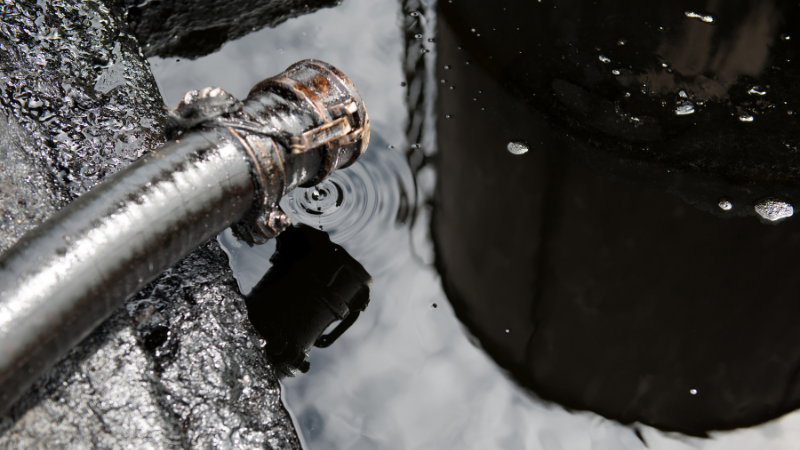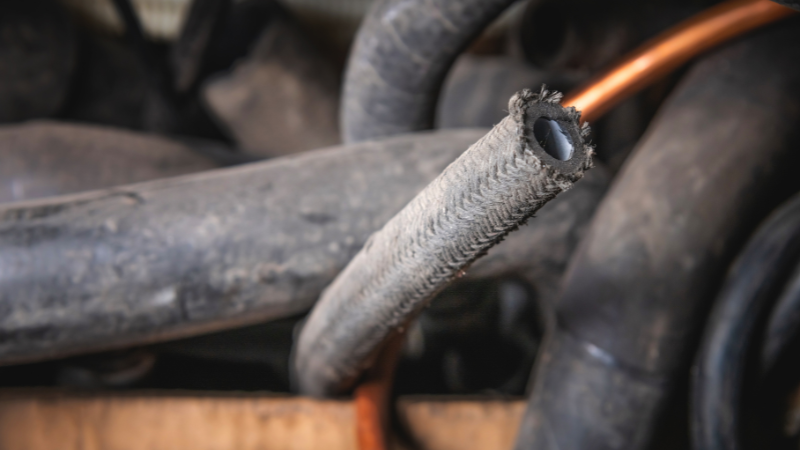Understanding Hydraulic RAM Repairs
December 22, 2023

Hydraulic RAMs play a crucial role in various industries, powering machinery and equipment with the force of pressurised hydraulic fluid. These essential components can encounter wear and tear over time, leading to the need for repairs.
In this blog post, we will delve into the intricacies of hydraulic RAM repairs, exploring common issues, the repair process, and preventative measures to extend the lifespan of these vital components.
The Basics of Hydraulic RAMs
Before delving into repairs, it’s essential to understand the basics of hydraulic RAMs. A hydraulic RAM, also known as a hydraulic cylinder, is a mechanical actuator that converts hydraulic energy into mechanical force.
These devices are widely used in hydraulic systems to generate linear motion and perform various tasks such as lifting, pushing, and pulling.
Hydraulic RAMs consist of a cylindrical barrel, a piston, and hydraulic fluid. When hydraulic fluid is pressurised, it forces the piston to move, generating mechanical force. This force can be harnessed for different applications, ranging from construction equipment to manufacturing machinery.
Common Issues Leading to Hydraulic RAM Repairs
Hydraulic RAMs are subjected to rigorous use in demanding industrial environments. Over time, several factors can contribute to wear and damage, necessitating repairs.
One of the most prevalent problems is hydraulic fluid leakage. This can occur due to damaged seals, worn-out O-rings, or cracks in the cylinder. Fluid leaks not only reduce the efficiency of the hydraulic system but can also lead to environmental contamination.
The piston rod is a critical component that can experience scoring, pitting, or bending. These issues may arise from excessive loads, misalignment, or insufficient lubrication. A damaged piston rod can result in erratic movement or complete system failure.
The interior surface of the cylinder can suffer from scoring, a type of abrasion that occurs when contaminants enter the system. This can affect the smooth operation of the hydraulic RAM and compromise its performance.
Seals are crucial for preventing fluid leaks and maintaining pressure. Over time, seals can degrade due to exposure to high temperatures, pressure fluctuations, or chemical exposure. Damaged seals need prompt replacement to ensure optimal performance.
Cavitation occurs when air bubbles form in the hydraulic fluid, leading to the formation of voids or cavities. When these bubbles collapse, they can cause damage to internal components, including the cylinder walls. Proper fluid maintenance is essential to prevent cavitation.
The Hydraulic RAM Repair Process
When a hydraulic RAM exhibits signs of malfunction, a systematic repair process is essential to restore its functionality. There are several different aspects to the Hydraulic RAM repair process that must be considered beforehand.
The first step involves a thorough inspection of the hydraulic RAM to identify the root cause of the issue. This includes examining the cylinder, piston rod, seals, and other components for signs of wear, damage, or contamination.
Once the problem areas are identified, the hydraulic RAM is disassembled carefully. This step involves removing the piston, seals, and other components for closer examination. It’s crucial to document the disassembly process to facilitate reassembly later.
All components must be thoroughly cleaned to remove contaminants and debris. Special attention is given to the interior of the cylinder to eliminate any scoring or residue that may affect performance.
Damaged or worn-out components, such as seals, O-rings, and piston rods, are replaced with new ones. It’s essential to use high-quality replacement parts to ensure the longevity and reliability of the hydraulic RAM.
With new components in place, the hydraulic RAM is reassembled following the documented process. Proper alignment and torquing of bolts are crucial to prevent future issues.
The repaired hydraulic RAM undergoes rigorous testing to ensure it operates within specified parameters. This includes checking for fluid leaks, verifying piston movement, and assessing overall system performance.
As a preventive measure, it’s advisable to replace the hydraulic fluid and filters regularly. This helps prevent contamination and ensures the hydraulic system operates at peak efficiency.
Preventative Measures for Hydraulic RAM Maintenance
To extend the lifespan of hydraulic RAMs and minimise the need for repairs, proactive maintenance measures are essential.
Conduct routine inspections to identify potential issues before they escalate. This includes checking for fluid leaks, inspecting seals, and monitoring the overall condition of the hydraulic RAM.
Ensure that all moving parts, especially the piston rod, are adequately lubricated. Proper lubrication reduces friction and wear, enhancing the overall performance of the hydraulic RAM.
Maintain the proper hydraulic fluid levels to prevent cavitation and ensure the hydraulic system operates smoothly. Regularly check for fluid quality and replace it as needed.
Operate hydraulic equipment within specified parameters, avoiding excessive loads, pressure spikes, and temperature extremes. Adhering to recommended operating conditions can significantly extend the life of hydraulic RAMs.
Provide training for operators and maintenance personnel to ensure they understand the correct usage and maintenance procedures for hydraulic systems. Knowledgeable personnel can identify issues early and perform basic maintenance tasks.
Hydraulic RAM Repairs with Pirtek Wirral
Hydraulic RAM repairs are a crucial aspect of maintaining the efficiency and reliability of hydraulic systems. Understanding the common issues, following a systematic repair process, and implementing preventative measures are key to ensuring hydraulic RAMs operate at their best.
By investing in regular maintenance and addressing issues promptly, industries can minimise downtime, reduce repair costs, and extend the lifespan of their hydraulic equipment.
A thorough repair process involves an assessment of the hydraulic RAM’s components, including seals, valves, and cylinders. Repairing or replacing worn-out parts promptly is essential to prevent further damage and maintain the overall integrity of the hydraulic system.
Additionally, addressing issues with precision and accuracy ensures that the hydraulic RAM operates at its designed efficiency, contributing to the optimal functioning of the entire hydraulic system.
Implementing preventative measures is equally important in hydraulic RAM maintenance. This involves proactive measures such as installing filters to prevent contamination, maintaining proper fluid levels, and following recommended operating parameters.
By adhering to these preventative practices, industries can minimise the risk of hydraulic RAM issues, ultimately reducing the frequency of repairs and enhancing the overall reliability of the hydraulic system.

Jack is the proud new owner of Pirtek Wirral. After taking over the franchise in early 2023, Jack’s leadership has already led to Pirtek Wirral winning national awards. With his expertise in all hydraulic systems, Jack is passionate to grow Pirtek Wirral into a leading franchise.
Have Any Questions?
Get in touch with our team today.
- 0151 725 6777
- help@dynamichydro.co.uk




